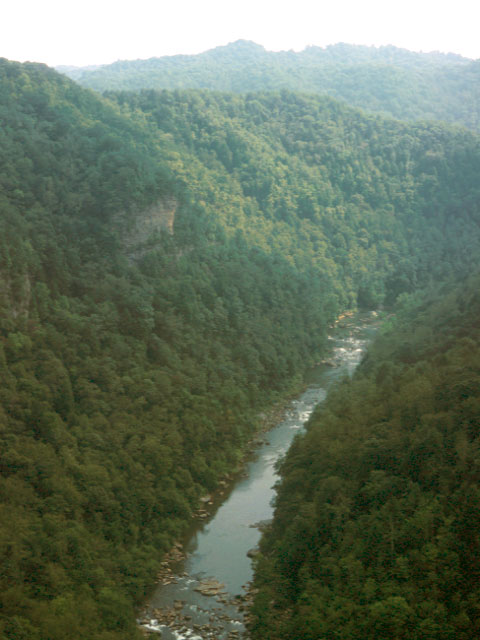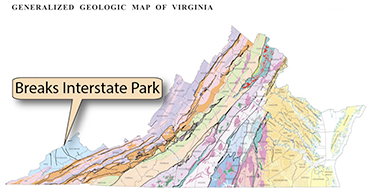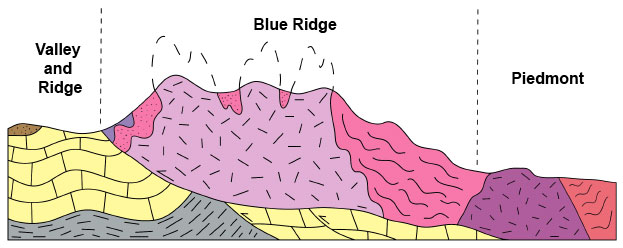
Appalachian Plateaus Physiography: Characteristic Features (Part 2)
• In many places, large rivers have cut deep gorges into Plateaus rocks. Spectacular, canyon-like scenery is the result.

 The Russell Fork River has cut a gorge in the Plateaus at Breaks Interstate Park in Dickenson County. Spectacular gorges like this one can be found throughout the Appalachian Plateaus physiographic province. (Photograph by Robert Whisonant)
The Russell Fork River has cut a gorge in the Plateaus at Breaks Interstate Park in Dickenson County. Spectacular gorges like this one can be found throughout the Appalachian Plateaus physiographic province. (Photograph by Robert Whisonant)
• The Plateaus province is an excellent example of a class of mountains called “topographic” mountains. These mountains occur on geologic features such as structural basins, which are not arched upward. “Geologic” mountains, on the other hand, are formed on arched features.

This diagram show how the Appalachian Plateaus form topographic mountains. These mountains are high-relief
areas eroded into structural areas that are not arched upward, such as flat-lying beds or a geological basin. (Diagram by Lori Combs)

In contrast, the Blue Ridge Mountains are a good example of geologic mountains. Here, an anticlinal feature, called an anticlinorium, has been eroded into a high-relief chain of mountains.
(Diagram by Lori Combs)